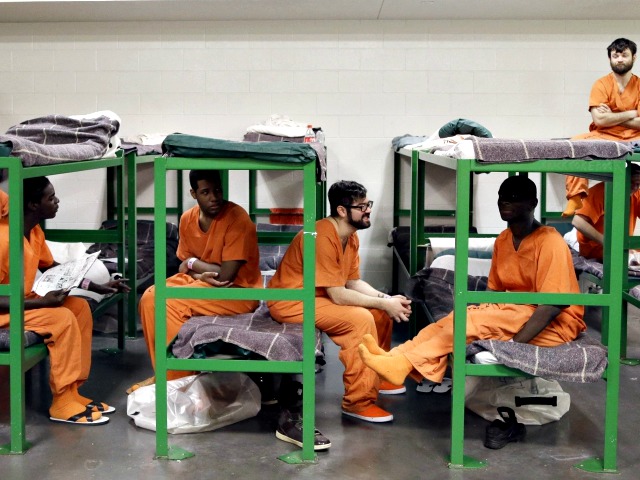One of the largest and toughest urban jails in America showcases a daily fashion show in one of their multiple prison wings. The models are an ensemble of gay and transgendered prisoners who are happy to be admitted into the gay wing of L.A. County Sheriff’s Men’s Central Jail.
EXCLUSIVE: Inside the Gay Wing of L.A. Men’s Central Jail from Voice Media Group on Vimeo.
Here inmates are able to be themselves and remain safe from the sexual and physical abuse they would endure if they co-habituated with the prison’s general population. Though the L.A County jail is equipped with 1,000 security cameras and employs about 500 Sheriff’s deputies as jailers, the prison is ripe with vicious prisoners who have a penchant for violence and killing other inmates.
Unfortunately, it’s not just the other prisoners the gays need to fear. According to the L.A. Weekly, this year, seven of the county’s own jailers were convicted for obstruction of justice and use of excessive force against inmates.
Moreover, the jail referred to as MCJ is saturated in racial tension and houses a pulsating population of prisoners expanding from 3,900 to 4,700 inmates on any given day–all confined in very close quarters.
The Weekly reported that some 400 prisoners live in the gay wing known as “K6G,” and are essentially cloistered from racial tension and gang rivalry. K6G is unlike any other sector of America’s 21 largest urban jails. Although jails in cities such as San Francisco maintain gay holding tanks, the gays and transgendered inmates live with the prison’s general population.
Whereas in most jails drugs and cigarettes are the most frequently imported contraband, at MCJ dresses and bras are more apt to be smuggled into K6G. Moreover, prisoners in the gay wing of MCJ may try to smuggle in a razor blade here and there but not for use as a weapon, but rather to craft a sewing needle to make panties or sexy blouses out of the sheets. In one instance, reports the Weekly, another inmate was smuggled into the wing because of his expertise in hand making dresses.
“For some people, this is their home because a lot of their families have disowned them and shunned them, so we’re their family,” said Yah Yah, a crack addict who was incarcerated at the age of 22 and has spent decades in prison. “A lot of people’s walks in here have been hard walks…But over hear you are allowed to say what you feel and how you feel, as opposed to being in line and living in fear. You don’t’ have to live that way anymore.”
Nevertheless, Yah Yah’s spirits are high when she sees the L.A. Weekly’s cameras roll, who are there to video the residents of the dormitory she calls home. Ya Ya struts her stuff as she prances down the aisle between the prison beds and across the cold chipped floor. She is joined by another gay inmate wearing a tight dress made from one of the sheets and wearing a necklace made of aluminum foil.
Duncan Roy, a gay British film producer told the Weekly that he spent 89 days in K6G in 2012, for a “immigration hold.” Roy says the dorm culture reminds him of an episode of Project Runway in which “they would just cut everything up” and transform it.
Guards have to develop “gaydar,” the ability to recognize a gay person by perception, because the gay wing is so friendly and safe that many heterosexual prisoners will feign being homosexual to get admitted into the gay wing. One guard will ask a potential inmate for information on a gay bar he went to when he was a civilian. “I’ll ask him to describe the bar, what was the cover charge…questions like that,” he said. How they answer those questions may determine their placement in the jail’s wings.
The seclusion of gays at MCJ resulted from a 1985 ACLU lawsuit, which aimed to protect homosexual inmates from facing increased risks of physical violence compared to heterosexuals. According to the Weekly now the inmates are not only safer, but actually are part of a small and flourishing society behind bars consisting of friendship, community, and love. Some inmates have intentionally re-offended after they are released from MCJ to get back in and reunite with an inmate they love.

COMMENTS
Please let us know if you're having issues with commenting.